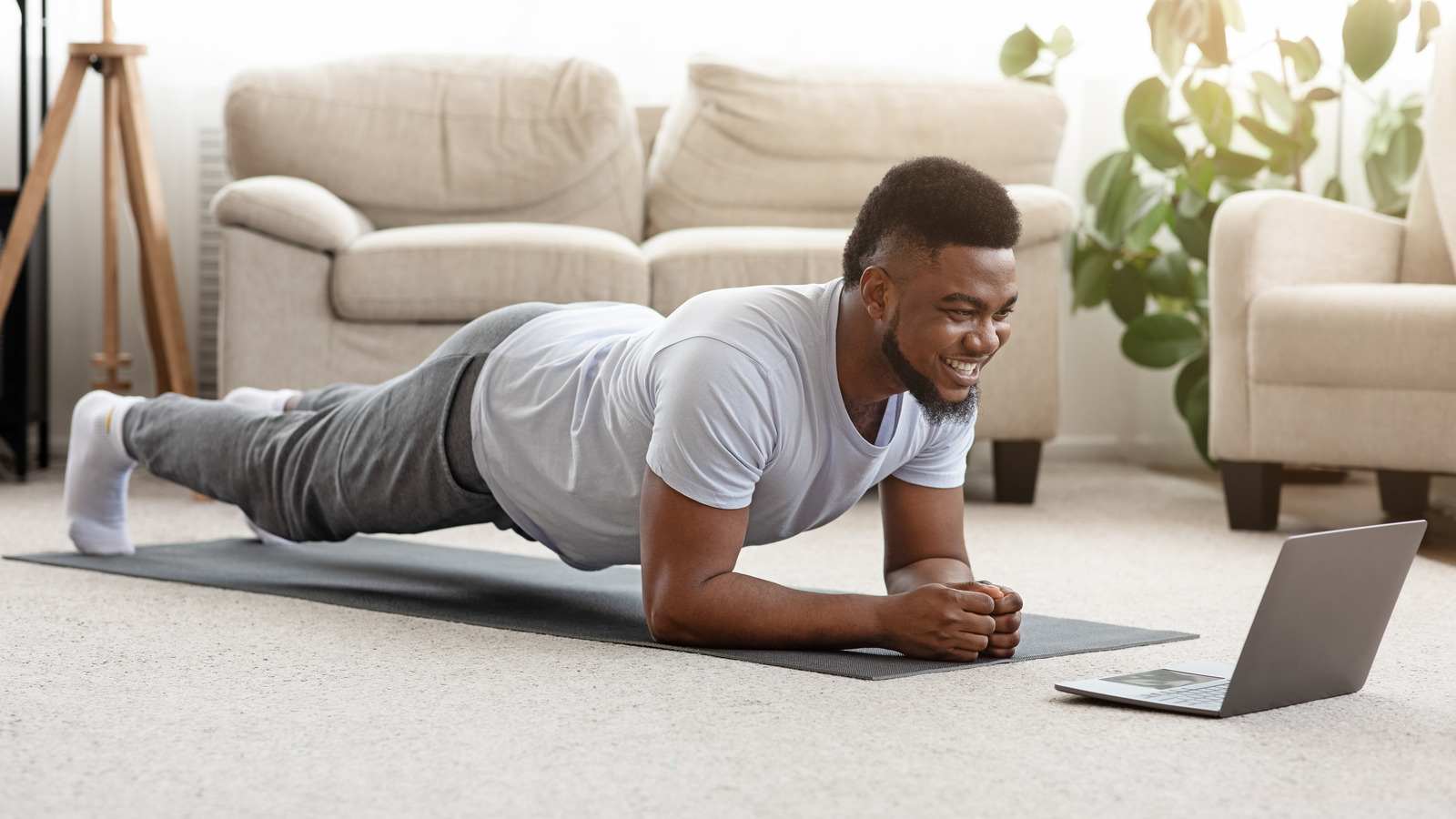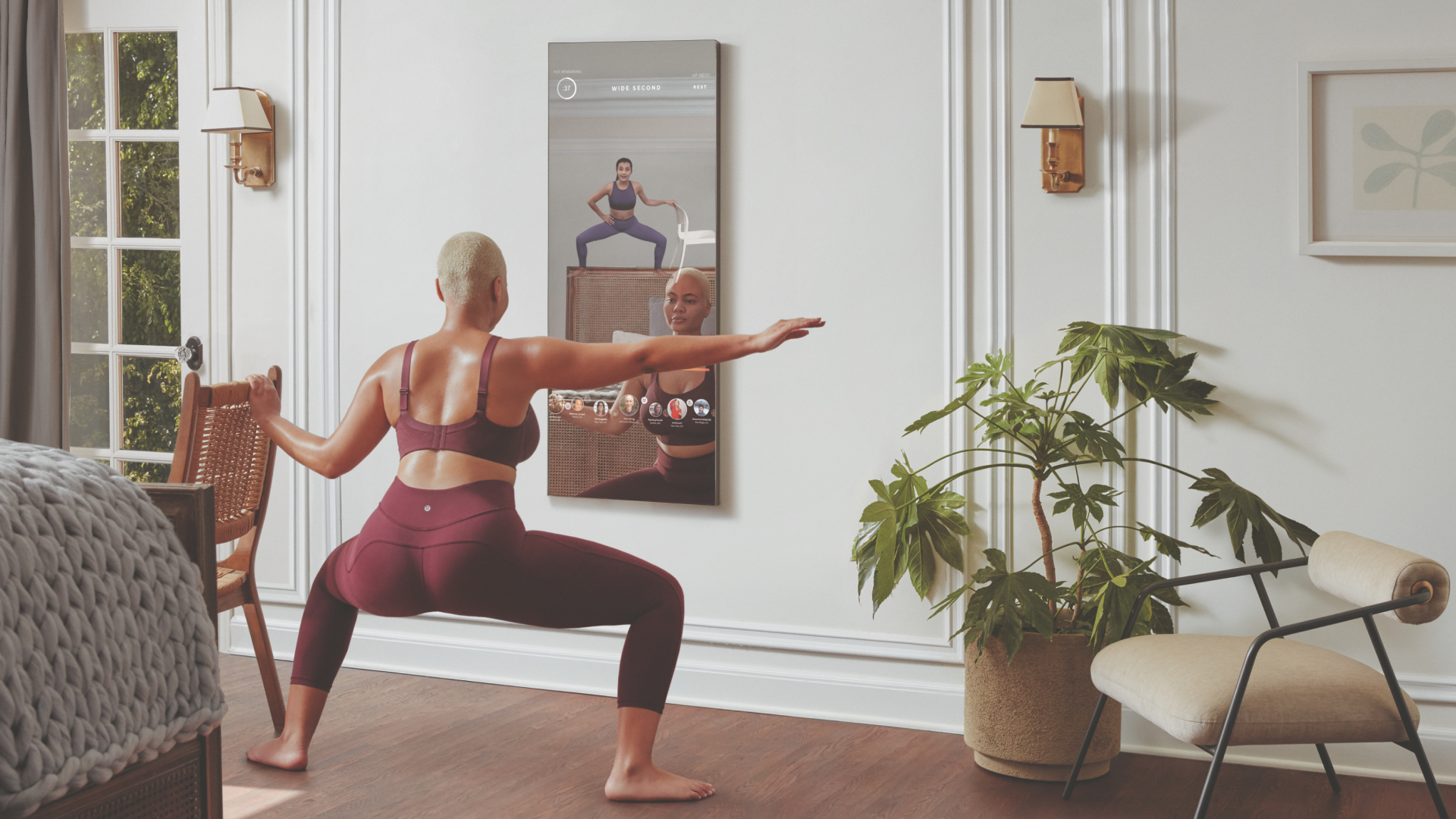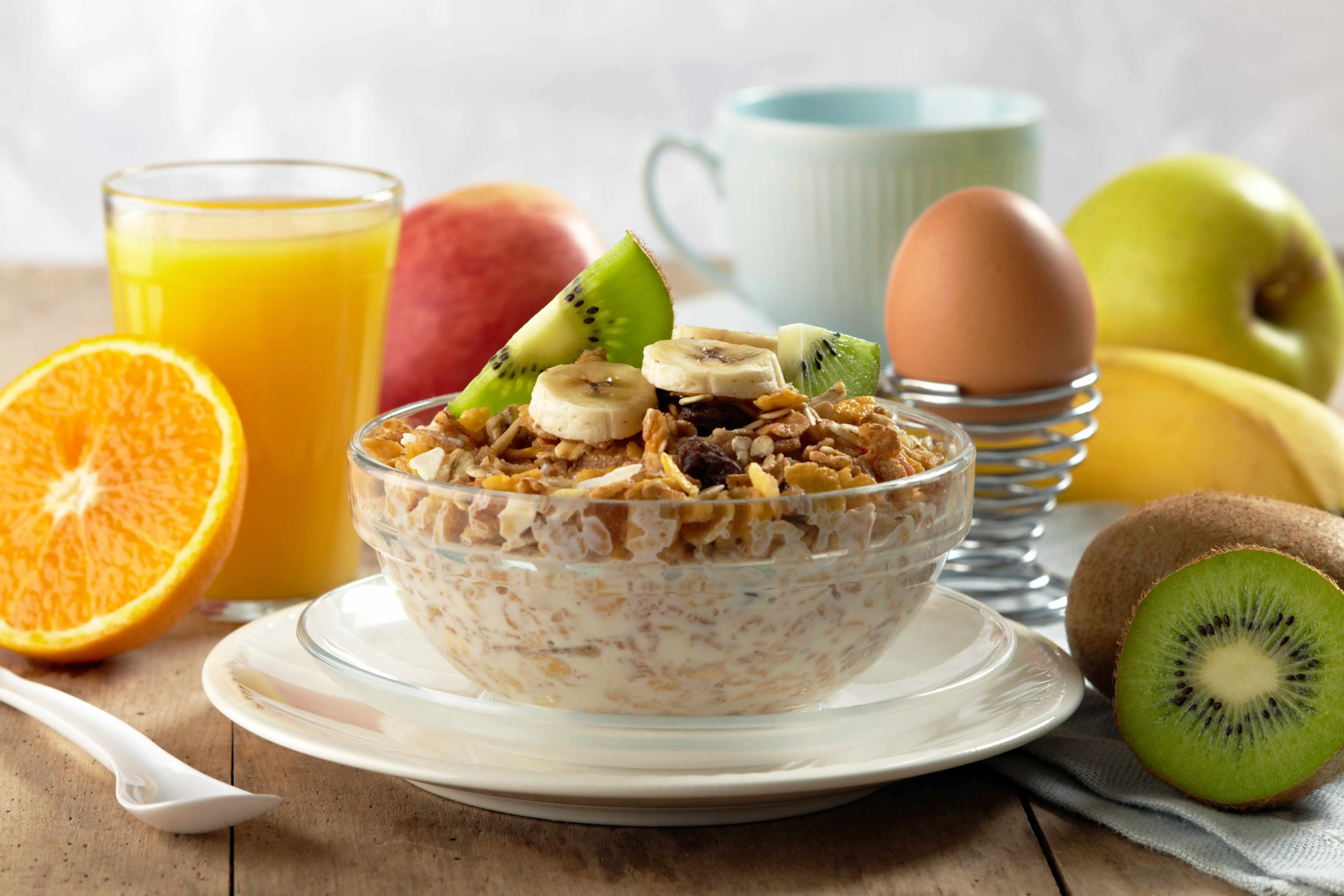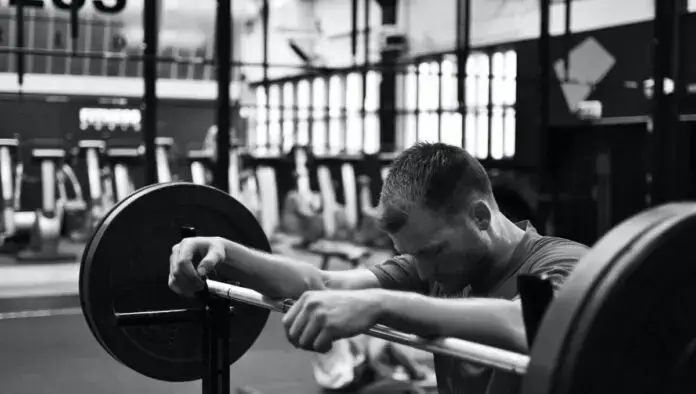Starting a fitness routine from the comfort of your own home? Look no further! This beginner’s guide will provide you with all the exercises and tips you need to kickstart your home workout journey. Whether you’re a fitness newbie or just looking for a change of scenery, home workouts can be a convenient and effective way to achieve your fitness goals. So, let’s dive right in and get started and explore the basics of home workouts!
Understanding the Basics of Home Workouts

Welcome to the world of home workouts! Before we jump into the exercises, it’s important to understand why home workouts are so beneficial. One of the key advantages of working out at home is the convenience it offers. You can exercise anytime, anywhere, without worrying about gym timings or overcrowded equipment. Plus, you’ll have the freedom to tailor your workout space to your preferences, creating an environment that motivates and inspires you.
But let’s delve deeper into the world of home workouts and explore the plethora of benefits it has to offer. When you choose to exercise at home, you not only save time but also save money. No more commuting to the gym, no more paying expensive membership fees. You have the luxury of utilizing that saved time and money to further enhance your fitness journey. Whether it’s investing in better workout equipment or exploring new fitness programs, the possibilities are endless.
Furthermore, home workouts provide a level of privacy that can be invaluable to many individuals. Not everyone feels comfortable exercising in public fitness settings, and that’s completely okay. By working out in the comfort of your own space, you eliminate any self-consciousness and can focus solely on your fitness goals. No more worrying about others judging your form or comparing yourself to others. Your home workout space becomes a safe haven where you can be your authentic self.
Importance of Home Workouts
Home workouts offer a multitude of benefits beyond convenience. They allow you to save time and money, as you won’t have to commute to a gym or pay membership fees. Additionally, home workouts provide privacy and eliminate the self-consciousness that some people may feel in public fitness settings. By exercising in the comfort of your own space, you can focus entirely on your fitness journey without any distractions.
Moreover, home workouts give you the flexibility to design your exercise routine according to your specific needs and preferences. You have the freedom to choose the exercises that work best for your body and goals. Whether you prefer high-intensity interval training, yoga, or strength training, you can customize your workout plan to suit your individual needs. This level of personalization ensures that you get the most out of your workouts and stay motivated along the way.
Another advantage of home workouts is the ability to create a harmonious balance between your fitness routine and other aspects of your life. With no time wasted on commuting to the gym, you can seamlessly integrate exercise into your daily schedule. Whether you’re a busy professional, a parent, or both, home workouts allow you to prioritize your health without compromising on your other responsibilities. It’s a win-win situation that promotes overall well-being.
Setting Up Your Home Workout Space
Creating a dedicated workout space at home is essential for a successful fitness routine. Find an area that is well-ventilated and has enough space for you to move freely. Clear the room of any obstacles or distractions, ensuring that you have enough room for your exercises. Consider investing in basic fitness equipment like dumbbells, resistance bands, or an exercise mat to enhance your workout experience. Remember, your workout space should be a sanctuary where you can devote your full attention to achieving your fitness goals.
Furthermore, personalizing your workout space can significantly impact your motivation and enjoyment. Consider adding elements that inspire and uplift you, such as motivational quotes, plants, or even a dedicated music system. You can also experiment with lighting to create a soothing ambiance or an energizing atmosphere, depending on the type of workout you’re doing. The key is to make your workout space an extension of yourself, a place where you feel empowered and ready to conquer any challenge.
Lastly, don’t forget about the importance of proper ventilation and lighting. Good air circulation is crucial for a comfortable and effective workout. Ensure that your workout space has windows or fans to keep the air flowing. Additionally, adequate lighting is essential for safety and visibility during your exercises. Natural light is ideal, but if that’s not possible, invest in bright, energy-efficient bulbs that mimic natural daylight.
Starting Your Home Workout Journey

Now that you have your home workout space set up, it’s time to embark on your fitness journey. Before diving into specific exercises, it’s important to identify your fitness goals and create a workout schedule that works for you.
Starting a home workout routine can be an exciting and challenging endeavor. By exercising at home, you have the convenience of working out on your own time and in a space that is comfortable and familiar. However, without the structure of a gym or a personal trainer, it’s essential to establish clear goals and a well-thought-out workout schedule to keep yourself motivated and accountable.
Identifying Your Fitness Goals
Take a moment to reflect on the reasons why you want to start a home workout routine. Are you aiming to lose weight, build muscle, improve flexibility, or simply boost your overall fitness levels? Setting clear and realistic goals will help you stay focused and motivated throughout your journey.
When setting your fitness goals, it’s important to be specific. Instead of saying, “I want to lose weight,” try setting a goal like, “I want to lose 10 pounds in the next three months.” This way, you have a measurable target to work towards. Remember, everyone’s fitness goals are unique, so don’t compare yourself to others. Embrace your individuality and strive for progress, not perfection.
In addition to setting specific goals, it’s also crucial to consider your current fitness level. If you’re just starting out, it’s best to begin with beginner-friendly exercises and gradually increase the intensity as you progress. On the other hand, if you’re already quite fit, you may want to challenge yourself with more advanced workouts to continue pushing your limits.
Creating a Workout Schedule
Consistency is key when it comes to home workouts. Designing a workout schedule that fits into your daily routine will ensure that you stay on track and make progress. Decide how many days a week you can commit to working out and allocate specific time slots for your workouts. Treat these time slots as non-negotiable appointments with yourself.
When creating your workout schedule, consider your other commitments and responsibilities. Find a time of day when you have the most energy and are less likely to be interrupted. Some people prefer to exercise in the morning to kickstart their day, while others find that an evening workout helps them unwind and de-stress.
Remember, even if you can only spare 20 minutes a day, it’s better than not doing anything at all. Consistency is more important than the duration of your workouts. If you find it challenging to fit in longer sessions, consider breaking your workouts into shorter, more manageable chunks throughout the day.
In addition to scheduling your workouts, it’s also beneficial to plan the specific exercises or activities you’ll be doing during beginner workout. This way, you can ensure that you’re targeting different muscle groups and incorporating a variety of exercises to keep your workouts interesting and effective.
As you progress on your fitness journey, don’t be afraid to make adjustments to your workout schedule. Listen to your body and be flexible with your routine. If you need to take a rest day or switch up your exercises, do so. The most important thing is to stay consistent and enjoy the process.
Essential Home Workout Exercises

Now that you have a solid foundation, let’s explore some essential exercises you can incorporate into your home workout routine. We’ll cover cardio exercises, strength training exercises, and flexibility and balance exercises to provide you with a well-rounded fitness regimen.
Cardio Exercises at Home
Cardiovascular exercises, also known as cardio, are great for boosting your heart rate and burning calories. Engaging in regular cardio workouts not only improves your cardiovascular health but also helps with weight management and overall fitness. Some effective cardio exercises you can do at home include jumping jacks, high knees, burpees, and dancing.
Jumping jacks are a classic exercise that targets your whole body. Start by standing with your feet together and your arms by your sides. Jump your feet out to the sides while simultaneously raising your arms above your head. Jump back to the starting position and repeat for a set number of repetitions.
High knees are another fantastic cardio exercise that engages your core, legs, and cardiovascular system. Stand with your feet hip-width apart and start jogging in place, lifting your knees as high as possible. Pump your arms in sync with your leg movements to increase the intensity. Aim for a fast-paced, high-energy workout.
Burpees are a full-body exercise that combines cardio and strength training. Begin in a standing position, then squat down and place your hands flat on the floor in front of you. Kick your feet back into a push-up position, perform a push-up, and then quickly return to the squat position. From there, jump as high as you can before repeating the entire sequence.
If you prefer more structured cardio workouts, you can try following along with online workout videos. Many fitness influencers and trainers offer free or paid workout programs that you can access from the comfort of your own home. Additionally, investing in a treadmill or stationary bike can provide you with a convenient way to get your cardio in, regardless of the weather outside.
Strength Training Exercises at Home
Strength training is essential for building muscle mass, increasing bone density, and improving overall strength. Fortunately, you don’t need heavy weights or bulky equipment to strength train at home. Bodyweight exercises can effectively target multiple muscle groups and provide you with a challenging workout.
Push-ups are a classic bodyweight exercise that primarily targets your chest, shoulders, and triceps. Start in a plank position with your hands slightly wider than shoulder-width apart. Lower your body until your chest nearly touches the floor, then push yourself back up to the starting position. If regular push-ups are too challenging, you can modify the exercise by performing them on your knees or against a wall.
Squats are an excellent compound exercise that targets your quadriceps, hamstrings, glutes, and core. Stand with your feet shoulder-width apart, toes slightly turned out. Lower your body by bending your knees and pushing your hips back, as if you were sitting back into a chair. Keep your chest up and your weight in your heels. Once your thighs are parallel to the floor, push through your heels to return to the starting position.
Lunges are another effective lower body exercise that targets your quadriceps, hamstrings, glutes, and calves. Start by standing with your feet hip-width apart. Take a big step forward with your right foot, lowering your body until both knees are bent at a 90-degree angle. Push through your right heel to return to the starting position, then repeat on the other side.
Planks are a fantastic exercise for strengthening your core muscles, including your abs, obliques, and lower back. Start by getting into a push-up position, then lower yourself onto your forearms. Keep your body in a straight line from your head to your heels, engaging your core muscles to maintain stability. Hold the position for as long as you can while maintaining proper form.
As you progress in your strength training journey, you can gradually increase the intensity of your workouts by incorporating resistance bands or dumbbells into your routine. Resistance bands provide variable resistance throughout the range of motion, making them a versatile tool for targeting specific muscle groups. Dumbbells, on the other hand, allow you to increase the load and challenge your muscles further.
Flexibility and Balance Exercises at Home
Flexibility and balance exercises are often overlooked but are crucial for maintaining joint mobility, preventing injuries, and improving overall functional fitness. Incorporating flexibility and balance exercises into your home workout routine can help enhance your athletic performance, reduce muscle soreness, and promote relaxation and mental well-being.
Yoga and Pilates are excellent practices that improve flexibility, balance, and core strength while also promoting mindfulness and stress reduction. Yoga combines physical postures, breathing exercises, and meditation to create a holistic mind-body experience. Pilates focuses on core stability, alignment, and controlled movements to improve flexibility, posture, and overall body strength.
There are plenty of online tutorials and apps available that cater to all experience levels, making it easy to incorporate these exercises into your home workout routine. Whether you’re a beginner or an advanced practitioner, you can find a wide variety of yoga and Pilates classes that suit your needs and preferences.
Remember to start slowly and listen to your body. Flexibility and balance take time to develop, so be patient with yourself and enjoy the process. With consistent practice, you’ll notice improvements in your range of motion, balance, and overall well-being.
Tips for Effective Home Workouts

Now that you’re familiar with the exercises, let’s discuss some essential tips to ensure that your home workouts are effective and enjoyable.
Maintaining Motivation During Home Workouts
Staying motivated can sometimes be challenging, especially when you don’t have the external support of a gym environment. However, there are several strategies you can implement to keep your motivation levels high. Set realistic goals, reward yourself for small achievements, and find a workout buddy or join online communities for support and accountability. Experiment with different workout styles and music playlists to keep your routine exciting and engaging.
Ensuring Safety During Home Workouts
Prioritizing safety during your home workouts is crucial to prevent injuries. Always warm up before each workout session to prepare your muscles and joints for the exercises. Listen to your body and modify or stop an exercise if you feel any pain or discomfort. Remember to stay hydrated and take regular breaks. If you’re new to exercising, consider consulting with a fitness professional to ensure that you’re using proper form and technique.
Tracking Your Progress
Tracking your progress is an essential aspect of any fitness journey. It allows you to see how far you’ve come and provides motivation to keep going. Keep a workout journal or use one of the many fitness tracking apps available to monitor your exercises, track your progress, and set new goals. Celebrate your milestones and don’t get discouraged by occasional setbacks. Remember, every step forward is a step in the right direction!
Nutrition for Beginner Home Workouts

When you embark on the journey of beginner home workouts, you’re not only taking a step towards a healthier lifestyle but also diving into a world of self-improvement. To ensure your efforts yield the best results, you must not only focus on the exercises themselves but also pay attention to your nutrition and hydration. In this guide, we will explore the key aspects of nutrition for beginner home workouts.
Fueling Your Body for Success
Proper nutrition is the cornerstone of any successful fitness regimen. When engaging in beginner home workouts, which often consist of bodyweight exercises, it’s vital to fuel your body adequately. Here’s what you need to know:
Starting Position: Whether you’re performing push-ups, squats, or lunges, always begin in the right starting position. For instance, in push-ups, place your hands shoulder-width apart and keep your body in a straight line from head to heels.
Workout Routine: For beginners, it’s recommended to start with a workout routine that lasts around 20 minutes, performed 2-3 times per week. This ensures you don’t overwhelm yourself and allows your body to adapt gradually.
Muscle Groups: Bodyweight exercises are fantastic for engaging multiple muscle groups simultaneously. From push-ups that work your upper body to squats that engage your lower body, you can expect a full-body workout.
Build Muscle: Contrary to the misconception that you need heavy weights to build muscle, bodyweight exercises can significantly help you build and tone your muscles. Make sure you maintain proper form throughout.
Rest Periods: Don’t forget the importance of rest periods. They are crucial for recovery and muscle growth. Incorporate rest periods between sets, giving your muscles time to recuperate.
Pre- and Post-Workout Nutrition
The food you consume before and after your beginner home workouts can greatly impact your performance and results. Let’s break down the essentials:
Pre-Workout: To kickstart your workout, consider a light meal or snack that includes a source of complex carbohydrates for sustained energy. A banana or whole-grain toast can be great choices. It’s also essential to stay hydrated.
Post-Workout: After you’ve given your all in your home workout, refueling is key. Opt for a combination of protein and carbohydrates to aid muscle recovery and replenish energy stores. A smoothie with protein powder, fruits, and yogurt is a convenient and effective choice.
Staying Hydrated
Hydration is often an overlooked aspect of beginner home workouts, but it plays a significant role in your overall performance and well-being. Here’s why staying hydrated is essential:
Everyday Movements: Even in your daily life, you lose fluids through simple activities like breathing and sweating. Staying hydrated ensures your body functions optimally during workouts and everyday movements.
Certified Personal Trainer’s Advice: According to certified personal trainers and group fitness instructors, staying hydrated helps maintain your strength and endurance. It’s recommended to drink water consistently throughout the day, and don’t wait until you’re thirsty.
Water for Weight Loss: Adequate hydration can also aid in weight loss. Sometimes, our bodies confuse thirst with hunger, leading to unnecessary snacking. By drinking enough water, you can curb these cravings.
Full Body Health: Proper hydration is not just about quenching your thirst during home workouts; it’s about maintaining the health of your entire body. From skin health to digestion, water is essential.
Beginner home workouts are a great way to get started on your fitness journey, and the right nutrition and hydration can make a world of difference. Remember, whether you’re doing bodyweight exercises or more advanced movements, consistency is the key. Fuel your body for success, and you’ll find yourself achieving your fitness goals in no time.
Common Pitfalls for Beginners

Overtraining: The Dangers of Pushing Too Hard
Beginner home workouts can be a fantastic way to kickstart your fitness journey. However, it’s crucial to understand the balance between pushing your limits and overtraining. Here, we delve into the dangers of overtraining and how to avoid it.
The Allure of Overtraining
When you’re just starting with bodyweight exercises at home, the enthusiasm to lose weight and build muscle might lead you to push harder and faster. The idea of doing more push-ups, squats, and lunges might seem like the shortcut to quick progress.
The Pitfalls of Overtraining
Overtraining, however, is a real concern. It can lead to injuries, burnout, and a plateau in your progress. It’s important to remember that your body needs adequate rest and recovery to adapt and grow stronger. Doing high-intensity workouts every day without rest periods can be counterproductive.
Maintaining Proper Form
One of the most common mistakes for beginners is neglecting proper form during exercises. This oversight can hinder your progress and potentially lead to injuries.
Starting Position Matters
Whether you’re performing elevated push-ups, squats, or side-lying hip abductions, always begin in the right starting position. For example, when doing a push-up, ensure your hands are shoulder-width apart, and your body is in a straight line from head to heels.
Consistency: The Key to Progress
Consistency is the cornerstone of success in your beginner home workout journey. It’s not about how hard you can push yourself in one session; it’s about maintaining a regular routine.
Workout Routine
To build muscle, lose weight, and enhance your fitness level, it’s essential to create a workout routine that you can stick to. For complete beginners, starting with 2-3 sessions per week for around 20 minutes is a great way to get started. Gradually increase the intensity and duration as your fitness level improves.
Rest Periods
Rest periods are often underestimated but play a pivotal role in your progress. They allow your muscles to recover and grow. Incorporate rest periods between sets to prevent overtraining and optimize your results.
Professional Guidance
Consider seeking guidance from a certified personal trainer or a group fitness instructor who can tailor an at-home routine to your specific fitness level and goals. Their expertise will help you avoid common pitfalls and ensure you’re on the right path.
Conclusion
As a complete beginner in the world of home workouts, it’s vital to strike a balance between pushing yourself to the limit and overtraining. Proper form, consistency, and professional guidance are your allies in achieving your fitness goals safely and effectively. Remember, the journey to a healthier and stronger you is a marathon, not a sprint.
With these exercises and tips in your arsenal, you’re now equipped to embark on your home workout journey. Remember, consistency and dedication are key to achieving your fitness goals. Stay motivated, be patient with yourself, and enjoy the process. Before you know it, you’ll be well on your way to a healthier, fitter, and happier you!

